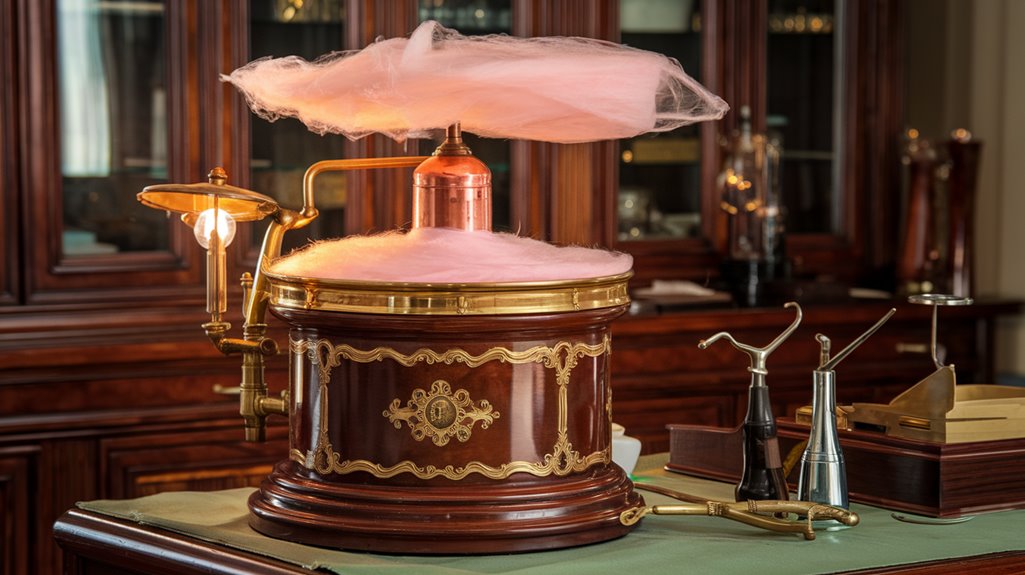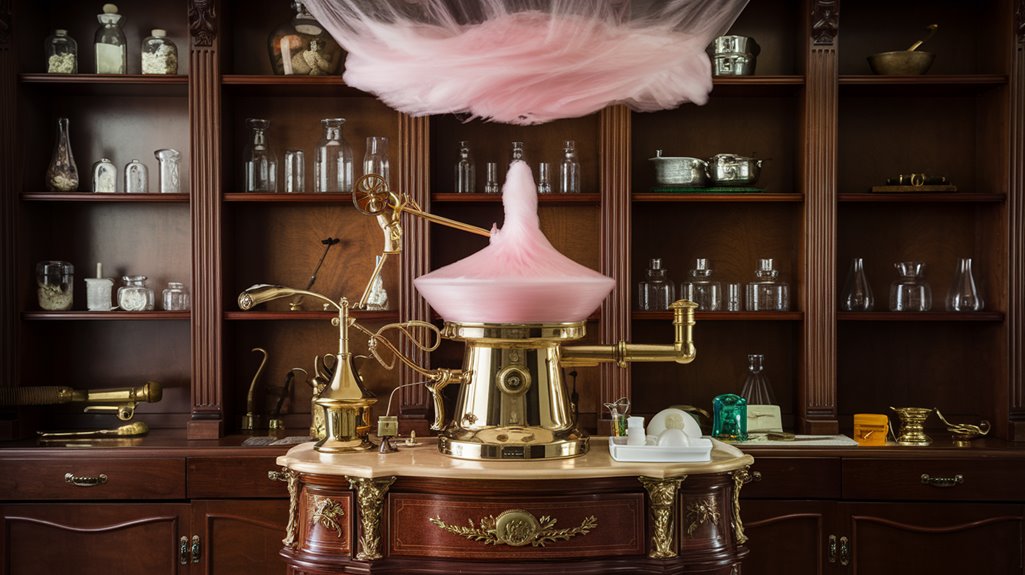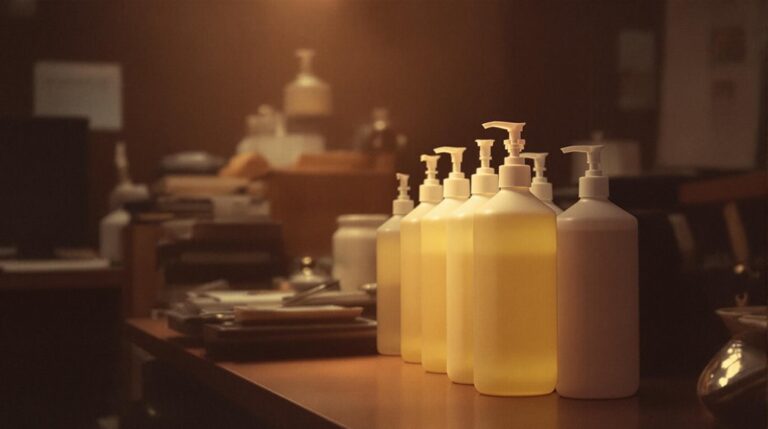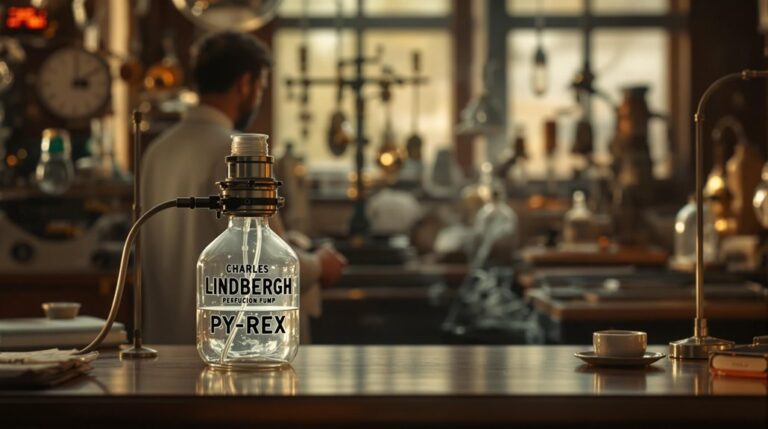Cotton Candy Was Created by a Dentist
You might think a dentist would be the last person to invent a sugary carnival treat, yet that's exactly what happened with cotton candy. When Dr. William Morrison teamed up with candy maker John C. Wharton in 1897, they weren't just creating another sweet snack – they were revolutionizing how people experience sugar itself. Their invention, originally called "fairy floss," would transform carnival treats forever, and the story behind its creation holds some surprising twists.
The Sweet Irony: A Dentist's Surprising Creation
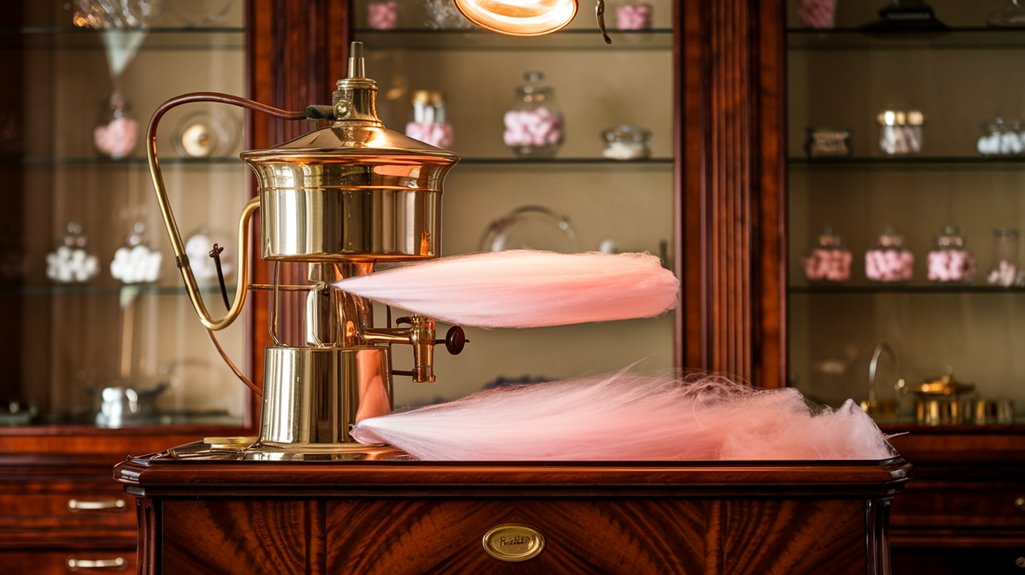
While it might seem counterintuitive, cotton candy owes its existence to a dentist. In a sweet irony, William Morrison, a dentist inventor with multiple talents as a lawyer and author, partnered with candy maker John C. Wharton in 1897 to create the first electric cotton candy machine.
Together, they revolutionized how this sugary treat was made. You might wonder what led a dental professional to develop a sugar-based confection. Morrison's innovative spirit drove him to create a machine that could melt sugar and spin it into light, airy threads, initially calling it "fairy floss." They secured patent protection for their groundbreaking machine design.
The invention made its grand debut at the 1904 Louisiana Purchase Exposition, where it captured the public's imagination. Each serving was sold for 25 cents a piece. Their success led them to establish the Electric Candy Company, forever changing the landscape of carnival treats.
From Fairy Floss to Cotton Candy: The Evolution of a Name
Morrison and Wharton's "fairy floss" started a naming evolution that would span continents and cultures.
You'll find its name origin varies remarkably across the globe, reflecting each culture's unique perspective. In the 1920s, dentist Josef Lascaux coined "cotton candy" after Louisiana's cotton fields, and the name quickly caught on in North America. The sweet treat gained massive popularity after machine-spun cotton candy debuted in 1897.
The cultural significance of this treat is evident in its diverse international names, each telling its own story. Italian pastry chefs created early spun sugar designs that showcased intricate golden scenes.
- In France, it's "Papa's Beard" (barbe à papa), evoking a whimsical, paternal image
- China's "Dragon's Beard" connects the treat to mythological imagery
- The Netherlands' "Suikerspin" (sugar spider) creates a magical, web-like association
- England's simple "candy floss" bridges the old and new terminology
The Science Behind the Fluffy Sweet Treat
Behind every wispy strand of cotton candy lies fascinating chemistry and precise engineering. When you look at this fluffy treat, you're actually observing complex sugar chemistry in action.
The process starts with regular sucrose (C12H22O11), which gets melted and spun into gossamer-thin strands that crystallize instantly when they hit the air. Originally called Fairy Floss, this sweet confection would later be renamed to better match its cotton-like appearance. Modern versions often feature swirled pink and blue colors to enhance their visual appeal.
You might taste various flavors in your cotton candy, from classic vanilla to fruity bubble gum. These distinct tastes come from carefully crafted flavor compounds like ethyl maltol and strawberry furanone.
The spinning machine forces the melted sugar through tiny holes, creating thousands of microscopic threads that solidify into the cloud-like confection you know. As the sugar molecules cool and reconnect, they form a unique structure that gives cotton candy its signature melt-in-your-mouth texture.
A World Fair Success Story
At the dawn of the twentieth century, the 1904 St. Louis World's Fair witnessed an innovation that would forever change the confectionery landscape. When William Morrison and John C. Wharton debuted their "Fairy Floss" machine, they couldn't have imagined its cultural significance and economic impact. Remarkably, this innovative candy was created by a local dentist who saw its potential.
The treat's instant success, selling 68,000 boxes at 25 cents each, generated over $17,000 – equivalent to half a million dollars today. The Electric Candy Company was established shortly after to market these revolutionary machines nationwide.
- You can still feel the same childlike wonder watching the sugar transform into fluffy clouds.
- You'll notice how it's become a cherished symbol of carefree moments at fairs worldwide.
- You're part of a global phenomenon that's grown into a $3.71 billion industry.
- You're experiencing a treat that's sparked agricultural growth and inspired culinary innovation.
The sweet success story continues as cotton candy evolves with modern trends and healthier alternatives.
Why Cotton Candy Is Less Harmful Than Other Carnival Treats
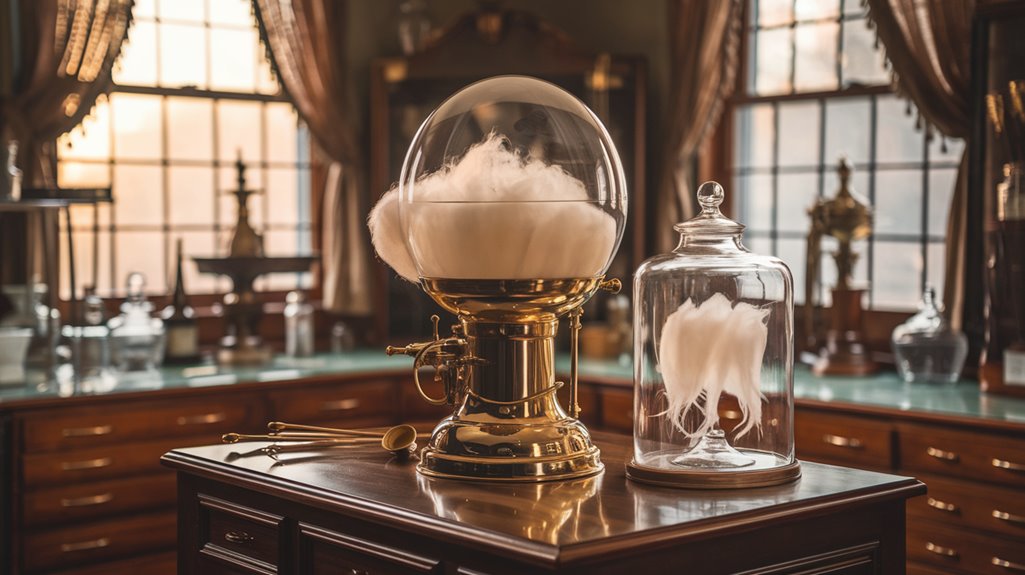
While carnival treats often raise health concerns, cotton candy emerges as a surprisingly less harmful option among fairground indulgences.
When you make a calorie comparison, you'll find that a one-ounce serving contains just 110-120 calories and zero fat, making it a lighter choice than funnel cakes, corn dogs, or caramel apples.
Though cotton candy's sugar impact shouldn't be ignored – with about 25 grams per serving – it's comparable to the natural sugar content in an orange. The creation of this sugary treat dates back to when William Morrison and Wharton first invented it in 1897.
You'll also find that it's not markedly worse than other carnival desserts like chocolate or gummy bears.
The treat's airy structure contributes to its lower calorie density, but you'll still want to practice moderation and maintain good dental hygiene to protect your oral health.
Modern Innovations and Global Impact
From its carnival origins to today's gourmet adaptations, cotton candy has undergone remarkable transformations. Originally created by Dr. William Morrison in 1897, this airy confection has captivated generations.
Innovative vegan options now feature natural ingredients like beets, carrots, and turmeric for health-conscious consumers. You'll find flavor innovation pushing boundaries with unique combinations like pomegranate-dark chocolate and watermelon beet. The QuickSpin machine has revolutionized production, letting vendors switch flavors instantly to match your preferences.
Market expansion shows impressive growth, with projections reaching $3.86 billion by 2027. You'll spot cotton candy in unexpected places, from upscale cocktail bars to trendy coffee shops.
- Feel nostalgic as rainbow swirls of cotton candy transport you back to childhood
- Experience pure joy when cotton candy melts into your hot coffee
- Indulge in guilt-free pleasure with lower-sugar cucumber variations
- Discover excitement as cotton candy transforms your favorite cocktail into a magical creation

